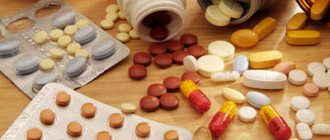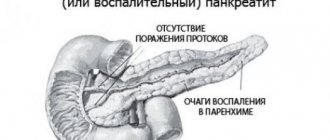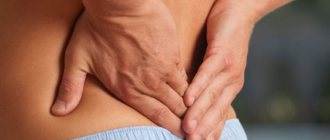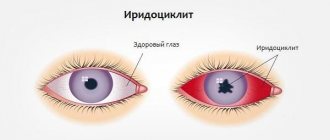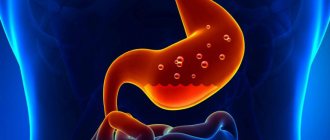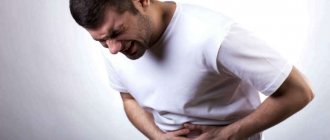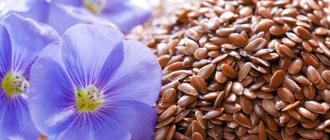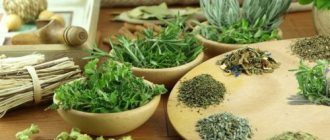1062
Biliary pancreatitis occurs when the bile ducts become inflamed and is most often accompanied by severe abdominal pain. The diagnosis is made by doctors based on test results and diagnostics.
This form of inflammation of the pancreas most often occurs in a chronic condition, which is determined by the characteristics of the course of concomitant diseases. A patient with chronic pathology must follow the doctor’s recommendations throughout his life and undergo timely treatment.
Causes of biliary pancreatitis
Biliary-dependent pancreatitis is diagnosed in children and adults. In 20-90% of cases it is preceded by cholelithiasis. The inflammation of the pancreas is based on the following processes: the spread of microbes through the lymphatic vessels, the reflux of bile due to pathology of the papilla of Vater, increased pressure in the ducts and stagnation of secretions.
Risk factors for developing the biliary form of the disease are:
- cholecystitis;
- biliary dyskinesia;
- hepatitis;
- impaired motor function of the gallbladder;
- cirrhosis of the liver;
- spasm or inflammation of the papilla of Vater;
- alcoholism;
- cholecystectomy (removal of the gallbladder);
- binge eating;
- excess fatty and spicy foods in the diet;
- opisthorchiasis;
- giardiasis;
- amoebiasis;
- congenital anomalies of the gallbladder;
- a sharp decrease in body weight;
- consumption of foods that have a choleretic effect.
A risk factor for the development of the biliary form of the disease is overeating.
The main reason is the presence of stones. Against this background, functional disorders develop (exocrine insufficiency).
Therapy
Initial treatment should be aimed at eliminating the underlying cause of the disease. Biliary pancreatitis progresses against the background of pathology of the biliary tract, liver and bladder. Therefore, therapy should eliminate stagnation and improve the flow of bile.
Treatment for pancreatitis is standard. It includes adequate pain relief and spasm relief. Painful symptoms significantly worsen the patient’s condition, so drugs are administered intravenously or in the form of droppers. Typically, Ketarol, Drotaverine, and Papaverine are used for this.
Further treatment is aimed at reducing the secretory activity of the gland and stomach. To do this, use an analogue of the hormone somatostatin (Sandostatin), proton pump inhibitors that reduce the secretion of hydrochloric acid in the stomach (Omeprazole, Lansoprazole, Pantopazole).
An important factor in protecting gland tissue is the administration of proteolytic drugs. This treatment inhibits the damaging effects of protein enzymes, reducing the size of tissue damage.
https://youtu.be/OdLcK_yVy6Q
?rel=0″>
Treatment should also take into account the presence of infection. The bile in the bladder may become infected. Therefore, antibacterial drugs are mandatory. Preference is given to 2-3 generation cephalosporins, fluoroquinolones and the antimicrobial substance Metronidazole.
In the remission stage for pancreatitis and cholecystitis, doctors prescribe choleretic drugs (Ursosan, Choludexan, Ursofalk). They activate the bile ducts and make the secretion more liquid. However, in the presence of stones, such drugs are contraindicated. They can only dissolve cholesterol stones, and thanks to them, small stones go into the bile ducts, provoking an attack of obstructive jaundice.
https://youtu.be/kJ8TGKp-wb0
Symptoms of biliary pancreatitis
The biliary form of inflammation of the pancreas has a nonspecific clinical picture. In its course, the disease resembles gastritis, tumors, enterocolitis and peptic ulcer. Inflammation of the gland parenchyma is characterized by exacerbations and periods of remission. The following symptoms occur:
- Pain in the epigastric region or hypochondrium, radiating to the back or shoulder. It occurs after eating or at night. The pain appears when drinking carbonated water and is caused by spasm of the sphincter of Oddi.
- Bitter taste in the mouth. Associated with bile reflux.
- Nausea.
- Increased body temperature.
- Yellowness of the skin.
With biliary inflammation of this digestive organ, signs of impaired digestion of proteins, fats and carbohydrates appear. They include loose or mushy gray stools with a greasy sheen and a pungent odor, flatulence, rumbling in the stomach, heartburn, loss of appetite, bitter belching and weight loss. Patients' weight loss is associated with fat loss. With severe biliary inflammation of the pancreas, symptoms of a lack of vitamins in the body appear.
Diagnosis of biliary pancreatitis
The disease can be identified through instrumental and laboratory tests. To clarify the diagnosis you will need:
- taking anamnesis;
- palpation;
- percussion;
- listening to the lungs and heart;
- general and biochemical blood tests;
- examination of urine and feces;
- Ultrasound of the abdominal organs;
- cholangiopancreatography;
- CT or MRI;
- duodenal intubation;
- FEGDS;
- scintigraphy;
- bile culture;
- parasitological analysis.
If a parenchymal biliary inflammatory process is suspected, consultation with several specialists (gastroenterologist, therapist, hepatologist) is required. Ultrasound is informative. With its help, you can identify stones and assess the condition of the gland tissues, pancreatic ducts and neighboring organs of the digestive system.
Tomography
The most informative method for diagnosing biliary inflammation is CT (computed tomography).
It allows you to obtain a layer-by-layer image of organ tissue. During the examination, a dye is often introduced. This helps to identify defects and evaluate the motility of the biliary tract. Tomography is more informative than ultrasound.
Analyzes
Blood tests of patients with biliary inflammation of the pancreas reveal the following changes:
- acceleration of ESR;
- increased concentrations of bilirubin and cholesterol;
- increased alkaline phosphatase levels;
- increase in amylase levels several times;
- high white blood cell count;
- increased activity of alanine aminotransferase and aspartate aminotransferase.
Blood tests of patients with biliary inflammation of the pancreas can reveal various changes.
A patient's urine test reveals low amylase levels. If jaundice develops, the urine may darken. With severe secretory pancreatic insufficiency, the composition of feces changes. It contains a lot of neutral fats, starch and muscle fibers.
Pathogenesis
There are several mechanisms for the development of biliary pancreatitis. The first is realized through the spread of infection from the gallbladder to the pancreas through the lymphatic tract. The second occurs when there are stones in the common bile duct, leading to the development of hypertension in the pancreas ducts with subsequent swelling of the pancreas.
The third mechanism is the reflux of bile into the pancreatic ducts due to pathology of the papilla of Vater (the site of the opening of the common duct of the liver and pancreas into the duodenum). As a result, damage to the ducts and pancreatic tissue occurs, and an inflammatory process develops. The latter will be aggravated by inflammatory diseases of the liver, since in them the bile thrown into the pancreas contains a huge amount of free radicals and peroxide compounds, which significantly damage the pancreas.
Research in the field of modern gastroenterology has discovered another mechanism of the inflammatory process in biliary pancreatitis - the formation of biliary sludge. With cholecystitis and subsequent gallbladder dysfunction, the physicochemical state of bile is disrupted, some of its components precipitate with the formation of microstones - this is biliary sludge. As it moves through the gallbladder, this sediment injures the mucosa, causing narrowing of the ducts and papilla of Vater. Stenosis of the latter leads to disruption of the secretion of bile into the duodenum and its reflux into the pancreatic ducts, as well as to stagnation of secretions in the pancreatic ducts.
As a result of stagnation, the activation of pancreatic enzymes contained in the secretion occurs not in the intestinal cavity, but in the ducts. The protective barrier of the pancreas is damaged, and the infection easily penetrates the gland tissue. Large gallstones can cause blockage of the common bile duct or sphincter of Oddi, which will also lead to reflux of bile into the pancreatic ducts.
Treatment of biliary pancreatitis
For biliary inflammation of the pancreas, treatment is carried out after consultation with a doctor. Therapy is aimed at the cause. If necessary, the patient is hospitalized. The main aspects of therapy are:
- elimination of inflammation;
- normalization of the condition of the gallbladder, liver and pancreas;
- prevention of complications;
- elimination of symptoms.
Treatment can be conservative (medicinal) or radical (surgical).
Drug therapy
For biliary inflammation, the following medications are used:
- analgesics;
- antispasmodics;
- choleretic;
- enzymes;
- antibiotics;
- statins;
- protease inhibitors;
- proton pump blockers;
- derivatives of ursodeoxycholic acid.
To eliminate the symptoms of intoxication, a solution of glucose or sodium chloride is used. In case of infection, it is possible to use broad-spectrum antibacterial drugs (cephalosporins, penicillins). During the remission phase, enzymes are indicated (Creon, Panzinorm, Festal). They cannot be prescribed for pain syndrome.
Antispasmodics (No-Shpa, Drotaverine, Spazmalgon) are used as symptomatic agents. If the cause of biliary inflammation of the pancreas is cholecystitis, then the treatment regimen can include drugs that promote the excretion of bile and enhance peristalsis of the biliary tract. To reduce the activity of pancreatic enzymes against the background of biliary inflammation of the gland, proton pump blockers (Omez, Pariet, Rabiet, Sanpraz) are indicated.
To dissolve stones, medications such as Ursosan and Ursofalk may be prescribed. They are contraindicated in cases of severe dysfunction of the pancreas and liver. If the cause is hepatitis, then hepatoprotectors are included in the treatment regimen. Sometimes antiparasitic drugs are prescribed (Biltricid, Azinox). They are indicated in the case of the development of biliary inflammation against the background of helminthic infestation.
Diet
An important aspect of therapy is proper nutrition. In case of exacerbation of biliary inflammation of the pancreas, fasting for 1-3 days is required.
Patients are allowed to drink non-carbonated alkaline water. If the cause is cholelithiasis, then meals should be divided 5-6 times a day.
Dishes must be warm. Excluded from the menu:
- alcoholic drinks;
- fatty dairy products;
- fried foods;
- spices;
- fatty fish and meats;
- mushrooms;
- canned food;
- fried foods;
- salo;
- mayonnaise;
- fresh baked goods;
- pickles;
- marinades;
- coffee;
- chocolate;
- salty cheese.
For biliary inflammation of the pancreas, it is recommended to include in the diet low-fat cheese, dried bread, cereals, sweet juices, weak tea, jam, preserves, lean meat (chicken breast, rabbit, turkey), boiled and baked vegetables, ripe berries, fruits and lean fish .
Folk remedies
For this disease, various folk remedies can be used in the form of decoctions, infusions and herbal tinctures.
For biliary inflammation of the pancreas, the following are effective:
- A mixture based on lemon juice and olive oil.
- Radish juice.
- Beet juice.
- Infusion of white birch leaves.
If the cause is cholelithiasis, the following plants are useful:
- sand immortelle;
- corn silk;
- dandelion;
- fennel;
- sagebrush;
- peppermint;
- tansy;
- calendula;
- celandine.
Folk remedies should be used only with the permission of a doctor, otherwise the condition may worsen.
Surgical methods
In case of biliary inflammation of the pancreas, surgical intervention may be necessary. Such treatment is indicated only in case of complications, the presence of gallstones or pathology of the sphincter of Oddi. The most frequently performed interventions are:
- cholecystectomy (removal of the entire gallbladder);
- lithotripsy (crushing stones);
- cholecystostomy (dissection of the bladder followed by suturing).
In case of biliary inflammation of the pancreas, surgical intervention may be necessary.
The operation can be open (cavity) or endoscopic. In the latter case, laparoscopy is performed. The advantages of the latter method are a small incision size, minimal cosmetic defect, quick rehabilitation of patients and a lower likelihood of complications.
Is it possible to cure
Treatment of biliary pancreatitis is long and complex. An endoscopist, surgeon and gastroenterologist take part in the process. Therapy is aimed at getting rid of the underlying disease that caused chronic inflammation of the gland and restoring the functioning of the biliary tract, liver, and gallbladder.
The fundamental aspects of treatment are subject to general rules, among which can be noted a reduction in pain, enzyme replacement therapy, a strict therapeutic diet, giving up bad habits (alcohol, smoking), and fortification of the body.
During the period of exacerbation (the first three days), the patient is prohibited from eating - therapeutic fasting is carried out. To avoid dehydration, it is recommended to maintain a hydration regime and drink at least 1.5-2 liters of liquid (medium or low-mineralized still water). Next, the patient is transferred to the 5P diet, based on split five meals a day and excluding the intake of fatty, spicy, fried foods. The consumption of fats and carbohydrates should be kept to a minimum, and proteins should predominate in the menu.
Prohibited products include products with a choleretic effect:
- egg yolks;
- cabbage;
- tomatoes;
- oil (vegetable, butter);
- greenery.
Vegetables and fruits are allowed only in processed form. Food is served in crushed form; preference should be given to the steam cooking method.
It is important that patients who have suffered biliary pancreatitis will have to follow a rational diet throughout their lives. It implies some expansion of the diet during the period of remission and strict restrictions during the acute stage. . Antispasmodics or prokinetics are prescribed as pain relievers (depending on the type of gallbladder motility disorder).
Antispasmodics or prokinetics are prescribed as pain relievers (depending on the type of gallbladder motility disorder).
To improve digestion and the general condition of the pancreas, enzyme medications are indicated. If there is a danger of developing an infection, a course is required. In case of indomitable vomiting, appropriate medications are prescribed to relieve this symptom. Diabetes mellitus often begins against the background of biliary pancreatitis, so the patient is prescribed medications that regulate blood glucose levels.
In the absence of contraindications, the doctor may prescribe litholytic therapy aimed at dissolving stones. However, it makes sense to use it only if the stones are small.
Possible complications
Biliary inflammation of the pancreas leads to complications if not treated in a timely manner. These include:
- acute liver failure;
- shock;
- peritonitis;
- encephalopathy;
- renal failure;
- abscess formation;
- necrosis of gland tissue;
- obstructive jaundice;
- secondary diabetes mellitus;
- diabetic coma;
- bleeding;
- intestinal obstruction;
- pseudocysts;
- polyps;
- fistulas;
- accumulation of fluid in the abdominal cavity.
The biliary form of inflammation of the pancreas, if not treated in a timely manner, leads to peritonitis.
If pancreatitis develops against the background of cholelithiasis, then empyema of the bladder, secondary cirrhosis, reactive hepatitis, scar formation and organ perforation are possible.
Clinical course
The acute process is characterized by a single attack of the disease with extremely severe symptoms and the occurrence of an emergency condition. After an attack, acute biliary pancreatitis often goes away without a trace, and complete recovery occurs.
The chronic process is characterized by a wave-like course with periods of exacerbations and remissions, and a steady progression of pathological changes in the gland.
Exacerbation of a chronic disease or the occurrence of an acute disease usually occurs due to dietary errors - consuming large amounts of fat, fried and spicy foods the day before. An attack of pancreatitis is characterized by symptoms:
- Intense pain around the epigastrium, more on the left, of a constant nature. If the patient has chronic biliary-dependent pancreatitis, the pain is aching. In an acute process, they are strong and unbearable.
- Feeling of nausea, vomiting.
- Loose stools or constipation.
- Sensation of bitterness on the tongue.
- Moderate hyperthermia is possible.
- Blood glucose levels may increase or decrease due to a disorder in the production of insulin and glucagon by gland cells.
Pancreas
When examining the patient, the symptoms of biliary pancreatitis will be positive: pain in the points of Mayo-Robson, Desjardins, Chauffard, Voskresensky's symptoms (absence of pulsation on palpation 5 centimeters diagonally from the navel towards the left armpit), Razdolsky's symptom (pain when tapping in the pancreatic area) , Mondor's symptom (purple spots on the patient's body), Tuzhilin's symptom (the presence of hemorrhages on the skin).
Prevention of biliary pancreatitis
The main measure to prevent biliary inflammation of the pancreas is the timely detection and treatment of diseases of the gallbladder and liver. To reduce the risk of developing pancreatitis, you must:
- eat small meals 4-5 times a day at the same time;
- do not abuse fatty and spicy foods;
- give up carbonated water and alcohol;
- quit smoking;
- be periodically examined by a gastroenterologist;
- take medications only as prescribed by a doctor;
- prevent helminthic infections.
The most important is proper nutrition, which reduces the load on the liver, gallbladder and pancreas.
How does the disease progress?
Biliary pancreatitis can have a chronic and acute form. The latter occurs due to the consumption of food that stimulates all digestive processes. These could be fried meat pies, carbonated drinks, delicious snacks, fried meat.
Such foods have never been considered healthy because they promote the movement of stones, which can block the ducts in the gallbladder. Patients with a chronic course of the disease, observing moderation in their diet, can prevent the occurrence of biliary pancreatitis.
The course of biliary pathology depends on the action of stones located in the bile duct. If they are small in size and pass well into the duodenum, then the patient’s condition quickly improves. If the movement of stones along the duct is difficult, then in this case you can fear for the patient’s life.
Forecast
The health prognosis for biliary inflammation of the pancreas is determined by the following factors:
- timely access to a doctor and provision of medical care;
- the presence of concomitant pathology;
- correct choice of treatment tactics.
With timely and correct treatment of pancreatitis against the background of cholelithiasis or cholangitis, the prognosis is favorable. The operation allows you to avoid relapses of this pathology. The prognosis for biliary inflammation of the pancreas worsens if the diet is not followed, alcohol is consumed, complications develop, and symptoms are ignored.
https://youtu.be/aCGaum6FMB0
Sources of the disease
The main reasons for the development of biliary pancreatitis are as follows:
- Gallstone disease - with it, stagnation of bile occurs as a result of blockage of the bile ducts with a stone, which entails an increase in intrapancreatic pressure, while bile is thrown into the pancreas.
- Cholecystitis is an inflammatory swelling process on the surface of the gallbladder, which causes an obstruction to the flow of bile.
- Cholangitis is an uncharacteristic inflammation of the bile ducts caused by obstruction of the bile ducts and infection of the bile itself.

